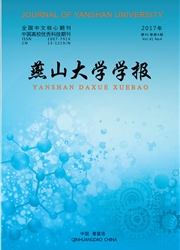

 中文摘要:
中文摘要:
为分析净浆、砂浆、混凝土徐变规律的相关性,在温度为(20±2)℃、相对湿度(60±5)%的试验条件下,测试了33%荷载水平,水胶比为0.37,磨细矿渣和粉煤灰分别以0%、30%、60%等质量替代水泥时水泥基材料的徐变度。试验结果表明:水泥净浆缺少骨料对徐变的抑制作用,其与混凝土的徐变演变规律存在较大差异。水泥砂浆的时变特性与混凝土非常接近,除粉煤灰掺量为60%以外的各组,矿物掺合料对砂浆徐变的影响程度与其对混凝土徐变的影响程度存在一致性结果。矿物掺合料与基体界面结合情况的SEM图像表明,除粉煤灰掺量为60%时,粉煤灰与基体的界面结合较差,其他4组的界面区无明显缺陷。因此,在研究矿物掺合料等因素对徐变性能的影响规律时,可用砂浆模拟混凝土,但要注意界面结合情况,当界面结合较差时,会对徐变规律的研究带来不可预知的影响。
 英文摘要:
英文摘要:
The creep behavior of cement-based materials incorporated with 0,30% and 60% of ground slag and fly ash respectively are tested under a stress strength ratio of 33%, in order to analyze the correlation of cement paste, mortar and concrete on creep characteristics. The water-binder ratio is 0.37, and the tests are conducted under the condition of controlled temperature (20±2)℃ and humidity (60±5) %. The results show that the evolution law of creep behaviors of cement paste have big difference with concrete, because cement paste lack the aggregate to inhibition creep. The time-varying characteristics of cement mortar is very close to concrete, and the influence of different mineral admixtures on mortar and concrete have consistent result except cement- based materials with fly ash of 60%. The scanning electron microscopy (SEM) images of the interface between mineral admixtures and cement paste show that the interface bonding between fly ash and cement paste is poor, the other four groups of inter face area without obvious defects. Mortar could simulate concrete in the study of the influence of creep properties on mineral admixtures. But when the interface bonding is poor, it may produce unpredictable influence.
 同期刊论文项目
同期刊论文项目
 同项目期刊论文
同项目期刊论文
 期刊信息
期刊信息
